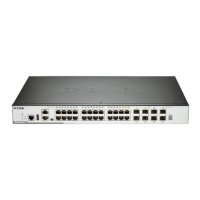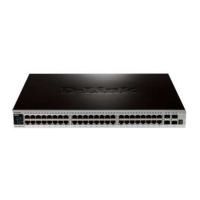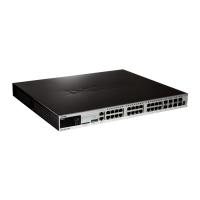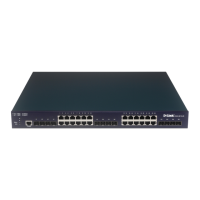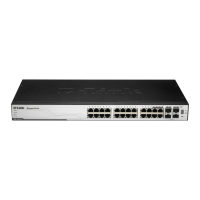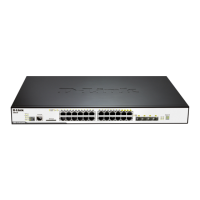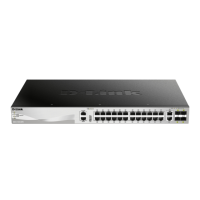DGS-3630 Series Layer 3 Stackable Managed Switch Web UI Reference Guide
45
Figure 4-14 SNMP Host Table Settings Window
The fields that can be configured are described below:
Parameter Description
Host IPv4 Address
Enter the IPv4 address of the SNMP notification host.
Host IPv6 Address
Enter the IPv6 address of the SNMP notification host.
VRF Name
Enter the name of the VRF instance here. This name can be up to 12 characters
long.
User-based Security Model
Select the security model here. Options to choose from are SNMPv1, SNMPv2c,
and SNMPv3.
• SNMPv1 - Select to allow the group user to use the SNMPv1 security model.
• SNMPv2c - Select to allow the group user to use the SNMPv2c security
model.
• SNMPv3 - Select to allow the group user to use the SNMPv3 security model.
Security Level
When selecting SNMPv3 in the User-based Security Model drop-down list, this
option is available.
• NoAuthNoPriv - Specify that there will be no authorization and no
encryption of packets sent between the Switch and a remote SNMP
manager.
• AuthNoPriv - Specify that authorization will be required, but there will be no
encryption of packets sent between the Switch and a remote SNMP
manager.
• AuthPriv - Specify that authorization will be required, and that packets sent
between the Switch and a remote SNMP manger will be encrypted.
UDP Port
Enter the UDP port number. The default trap UDP port number is 162. The range
of UDP port numbers is from 1 to 65535. Some port numbers may conflict with
other protocols.
Community String /
SNMPv3 User Name
Enter the community string to be sent with the notification packet.
Click the Add button to add a new entry based on the information entered.
Click the Delete button to remove the specified entry.
SNMP Context Mapping Table Settings
This window is used to display and configure the SNMP context mapping table settings.
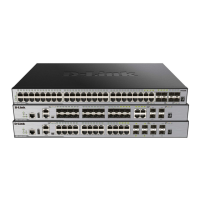
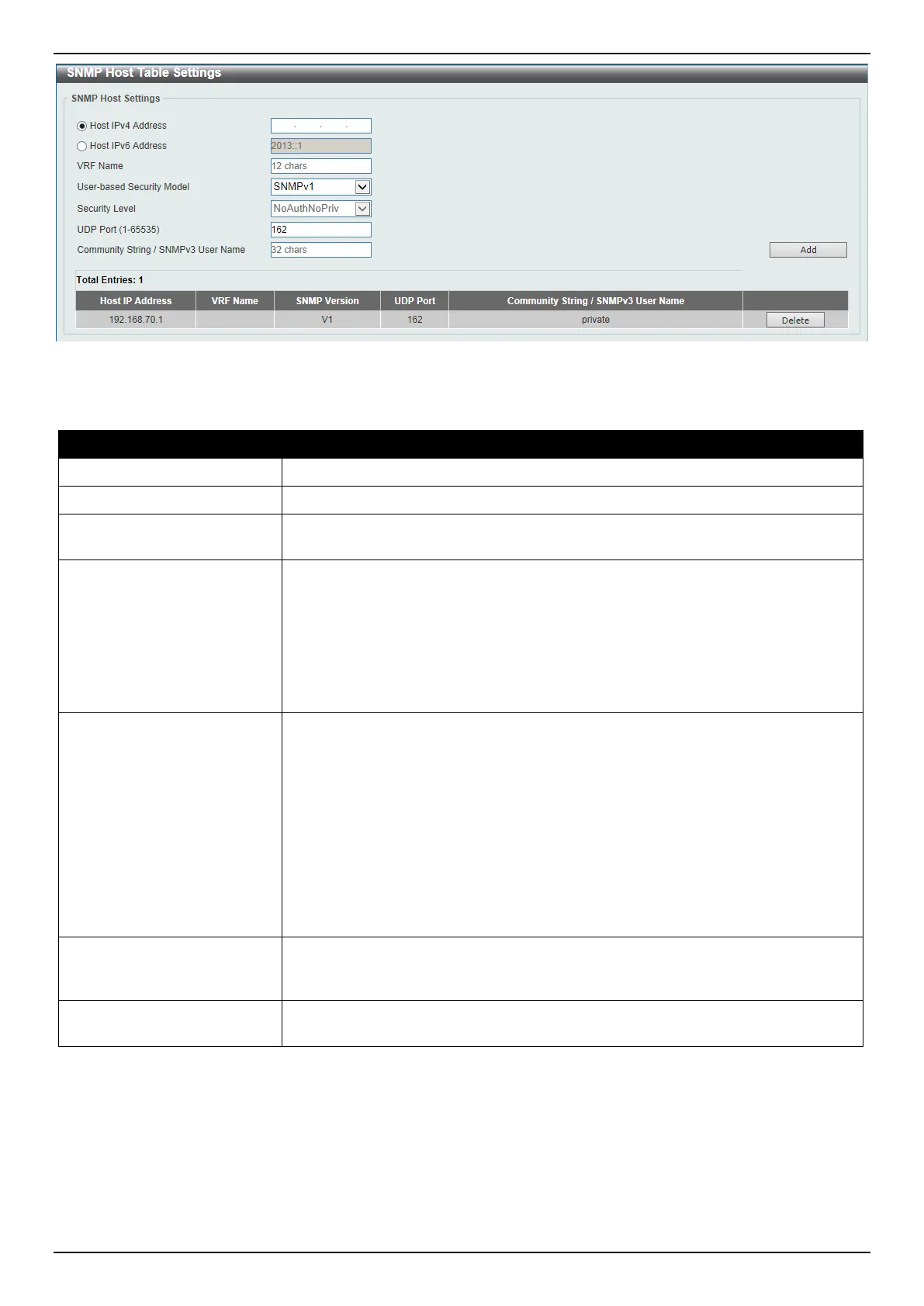